Cuba Art & Culture, Cities
Havana’s creative heart: Music, art and culture in Cuba’s capital
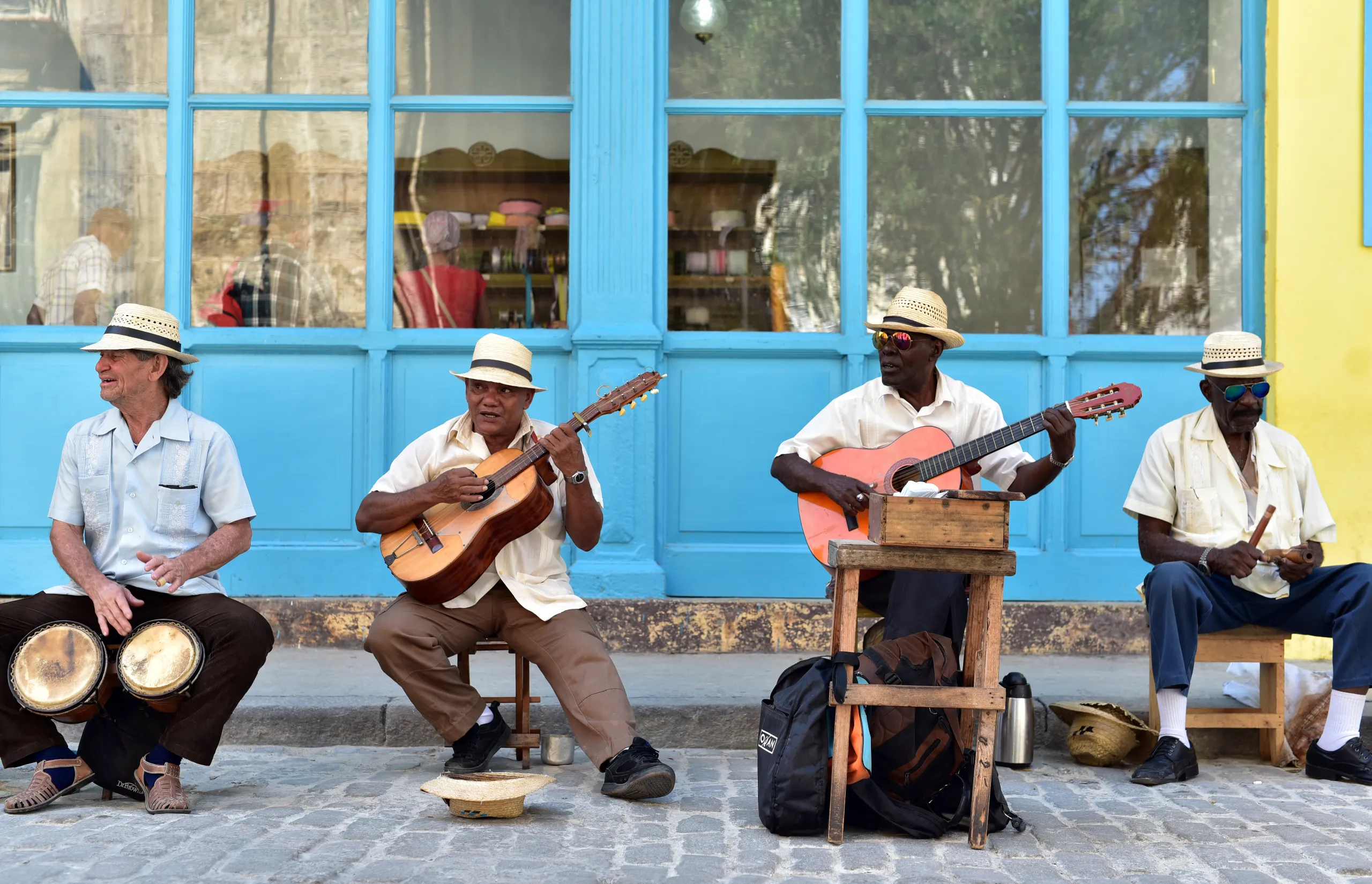
Havana, Cuba
Despite economic hardship, Havana’s soul still sings. Beneath the Cuban capital’s timeworn beauty remains a city of rhythm and resilience, where music, art and creativity flourish
Sandalwood incense wafts high into the rafters of a bijou Havana studio, thick with stacks of vinyl, speakers and a deck. DJ Jigüe, who set up Cuba’s first independent urban music label, wears a white shell necklace and a black baseball cap. He’ll take me on a journey through Cuba’s music history via his record collection, he says. I have no idea what to expect. Most travellers have heard of global musical sensation Buena Vista Social Club, which catapulted the island nation into the world’s imagination. But more than that?
DJ Jigüe takes me on a deep dive into the origins of Cuba’s music, expertly switching between engaging commentary, clips of tunes as vinyl spins on the player, and turns at performing air-trombone, -bass and -piano. I’m mesmerised. Key moments are brought to life: the US and Cuban meeting of musical minds that fused Afro-Cuban percussion and jazz for the first time; the suspension of US and Cuban relations in 1961, isolating Cuba’s musicians from new musical genres; the youth who captured North American rock and funk played on US radio via illegal antennae angled towards Florida; Cuban sailors who packed their luggage with records in the ’70s; the fusion of North American funk and rock with Cuban music; and the arrival of rock, hip hop, electronic music and rap on the island. If I had to go back to school, DJ Jigüe would be my profe, as Cubans affectionately call their teachers.
Cuba’s rhythms and roots
And it isn’t just about the music – I’m immersed in a brilliant potted history of Cuba over the last century featuring its fractious relationship with the US, its pull into the orbit of the Soviet Union, and its penchant for featuring Africa percussion instruments in music to this day.
Between the 16th century until slavery abolition in 1886, Cuba’s Spanish colonial rulers trafficked some 800,000 people from the west coast of Africa. African roots, especially Yoruba from Nigeria, run deep across the country, and can be found in religion – as well as music.

Faith, tradition and Santería in Havana
From DJ Jigüe’s house in Centro Habana – a tightly packed residential area of dilapidated colonial homes sandwiched between the Spanish colonial heart of Old Havana and the leafy neighbourhood of Vedado, with its wedding-cake mansions and theatres – we head to the western end of the Centro barrio.
Elias Aseff Alfonso meets me in Trillo Park, anchored with sacred Ceiba trees where offerings are left by followers of Santería, a syncretic religion that blends Roman Catholicism with the Yoruba religion of West Africa. Elias introduces me to Cuba’s pick-and-mix approach to religion, where “you can be Catholic in the morning, Protestant in the afternoon and practise Santería in the evening!”
We enter a family home full of altars, stuffed baby crocodiles, masks, statues and ceramics. A turtle (for protection) skulks in a sink. Elias, a believer himself, gives me the 101 on Santería, decoding the mysteries – at least to me – of the room. He has helpful celebrity cues, too: the reason Beyoncé wore yellow when she was pregnant was that she was honouring Oshún, the goddess (or orisha) of love, fertility and water. Oshún – “a frequency of energy,” explains Elias – wears the colour yellow, and in Cuba, she is often represented by sunflowers.
Havana is full of “frequencies of energies”. Cubans are a garrulous lot who joke all the time and talk in proverbs. Where a few words would suffice, there is a flourish of language, an excess of wit – a lecture even, and a whole heap of warmth, despite the economic and migratory crisis gripping the island. It’s what ultimately makes this Caribbean island so thrilling and worth visiting. As my guide Jesús Noguera says: “Cubans are warm, welcoming, educated and resilient.”
While You’re Here
Check into Gardens Havana – a beautiful boutique hotel – and make the most of the concierge team, who can organise for you to attend a dinner party with Cuban creatives, a picnic on nearby beaches, or a wonderful cooking class with Lorena Faccio, a judge-turned-chef who runs her own YouTube cooking show. Lorena will open her own restaurant in Old Havana in the summer. gardenshavana.com
The other boutique hotel of choice is Estancia Bohemia, which offers experiences that range from visiting a cigar plantation to rum tastings, salsa classes and photography tours. havanabohemia.com
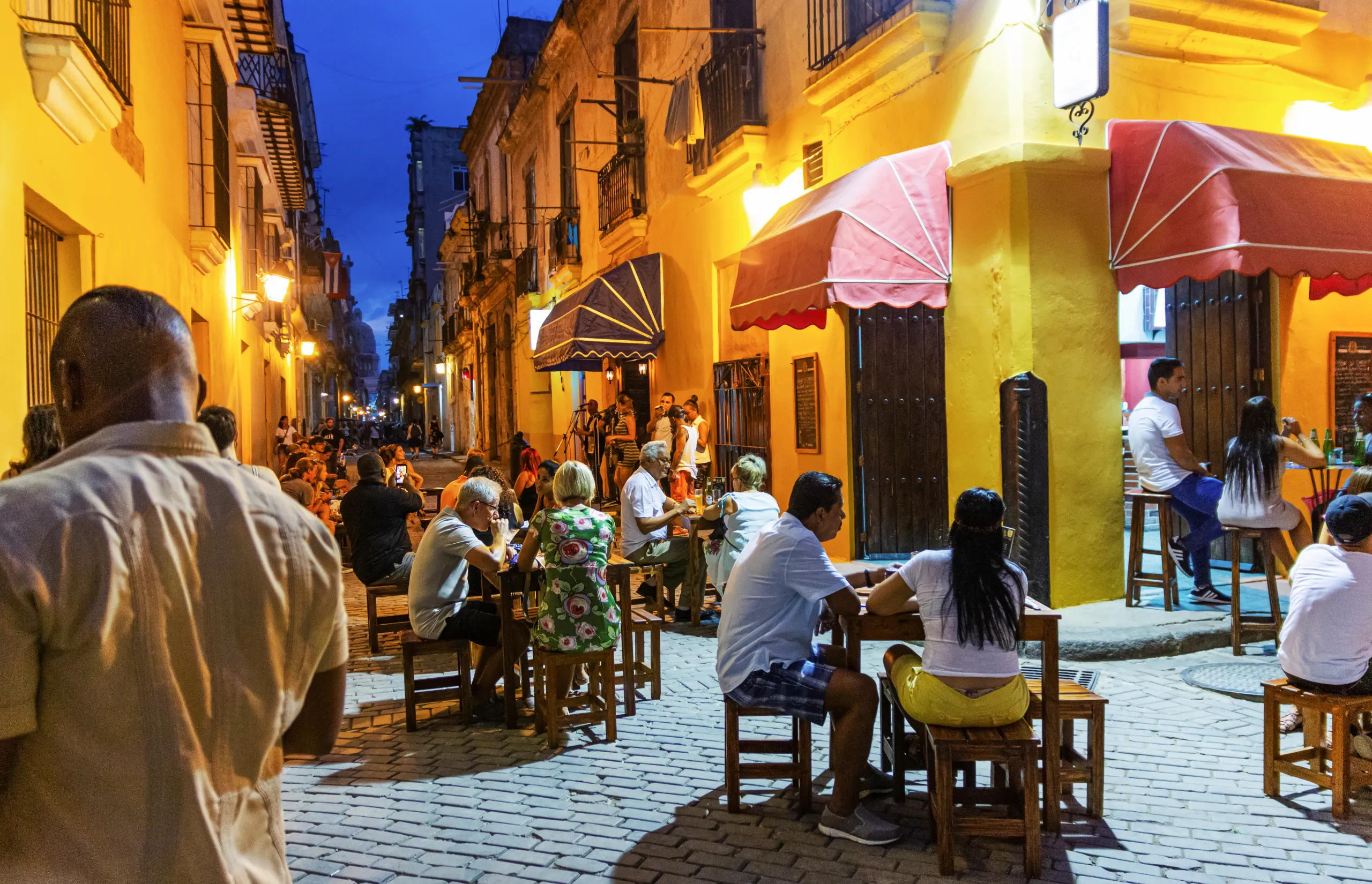
Old Havana’s living history
We walk through Old Havana. Huge baroque buildings of coral-flecked stone dominate the large plazas, while immense buildings with portals are frilled with carved iron balconies and punctuated with halfmoon windows radiating light through stained glass, dazzling in yellow, sky blue, green and scarlet. The sun-drenched streets are a UNESCO World Heritage Site crammed with more than 3,300 buildings dating from the city’s foundation in 1519 by Spain’s conquerors.
But it’s not a theme park. Plaza Vieja, the city’s liveliest square, is home to new businesses, galleries, shops, hotels and a school, Jesús points out. “The government has opened our economy to private business,” he tells me, “and Cubans are gaining momentum.”
Kids are kicking balls and roller skating. At a cafe, a band member plays the clave (two hardwood sticks tapped to create a penetrative five-note, repetitive two-bar pattern), a heart-stopping sound that reminds me I’m in Cuba. Customers flock to tables as two locals start moving their hips in time to the live music.
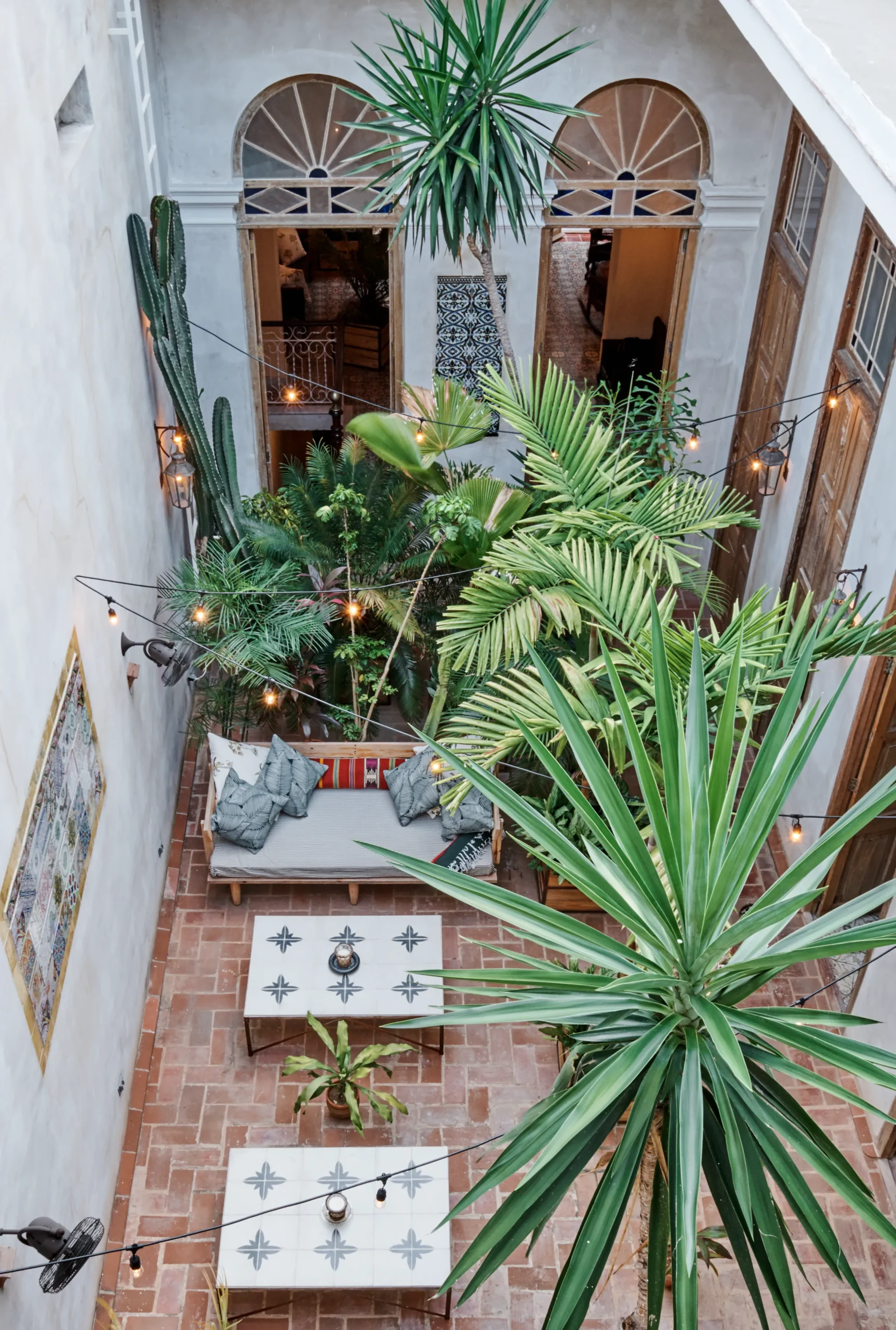
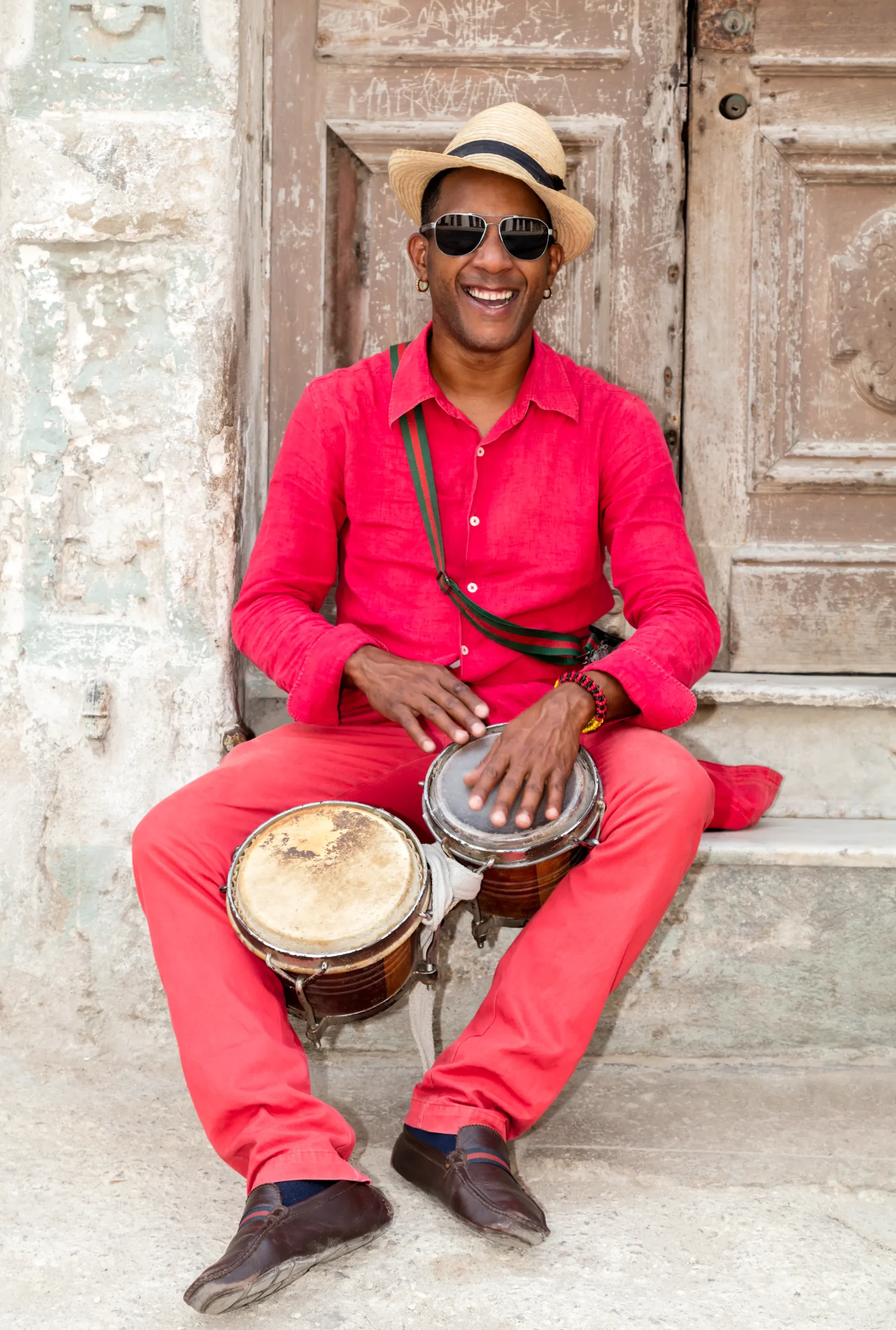
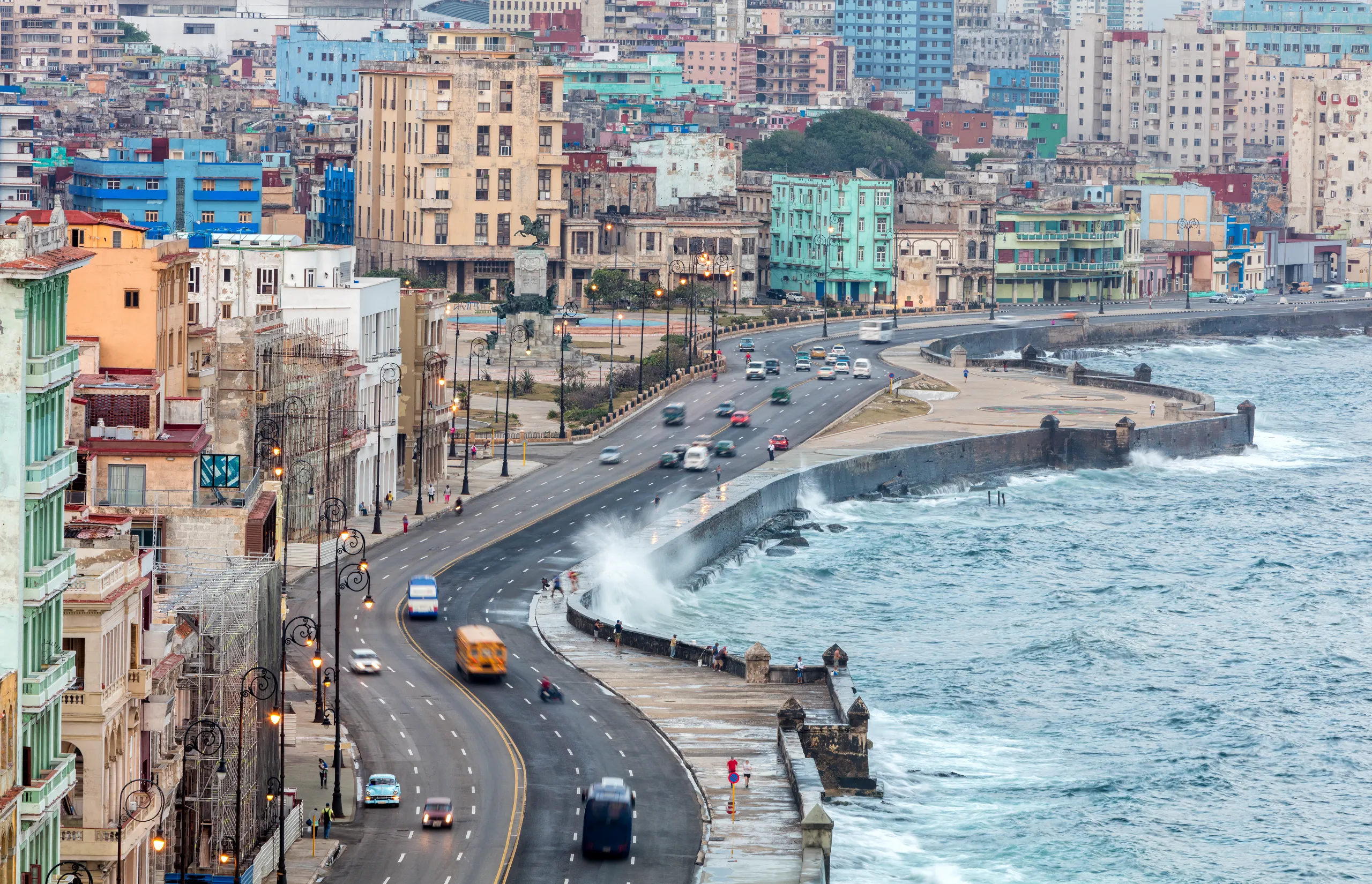
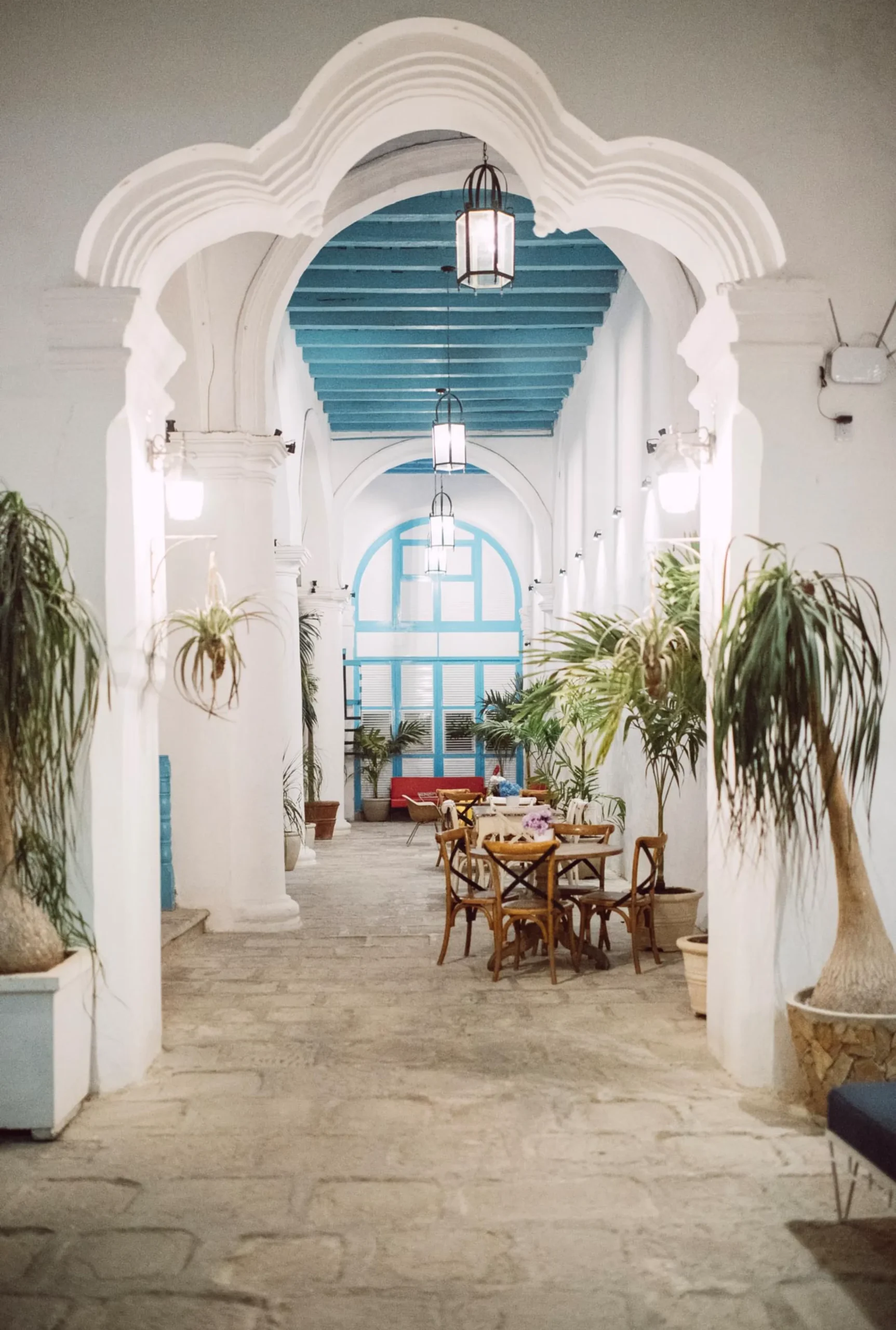
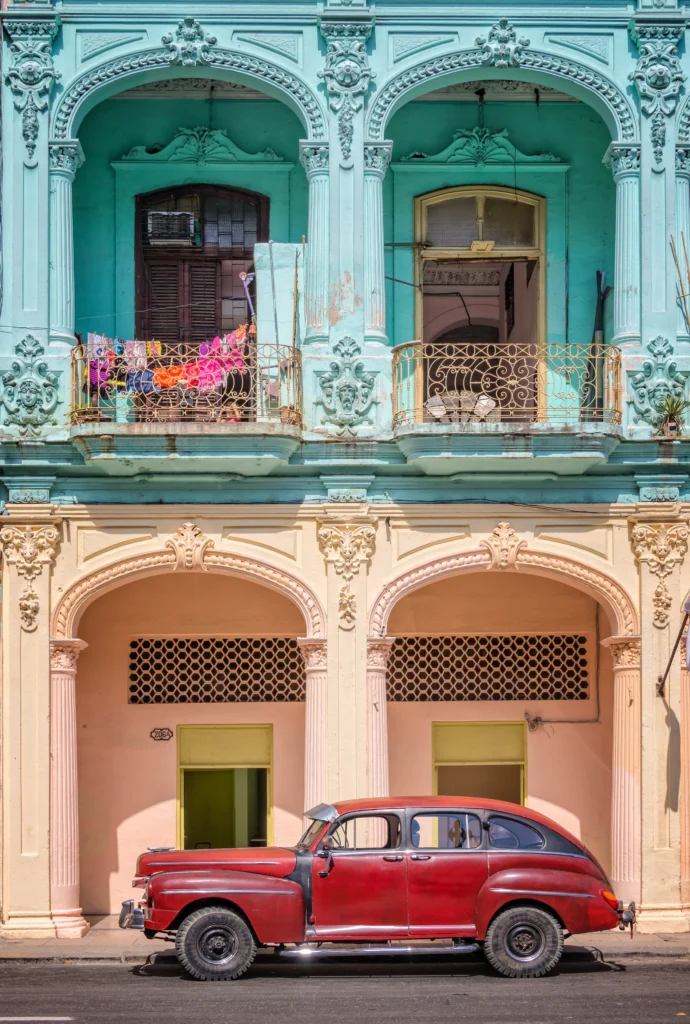
Artists shaping Havana’s creative soul
Jesús and I then slip into the groove of a different vibe: We clamber into a bubblegum-pink convertible 1954 Chevy Bel Air and cruise down Havana’s curving corniche, the Malecón, where whipped-up waves splash onto the road sending cars swerving, and fisherman with rods off the wall. We’re on our way to visit Cuban artists working out of their home studios. This insider access brings me into the front living rooms of some of the country’s most accomplished and interesting creatives.
Luis Enrique Camejo works in an old chocolate factory. I’ve always been drawn to his art – in particular, his canvases viewed through the prism of drops of rain, which I find ethereally beautiful. Whole monochrome scenes of Havana are loaded with classic cars and traffic lights. “The rain always gives a sensation of melancholy. Here in Cuba, we’re very marked by nostalgia, melancholy, separation…” he says, offering me his last beer from his recent birthday party.
Good to Know
Time your journey to Cuba for one of its festivals. January attracts dozens of Cuban and international musicians to perform at the International Jazz Plaza. February brings Festival De La Salsa En Cuba and cigars via Festival del Habano. March sees rhythm and dance with a drum celebration, Fiesta Del Tambor. April brings dancers into the squares of Old Havana with the Dance in Urban Landscapes celebration as well as dance festival, Ritmo Cuba. June hails the Bolero Festival, while October hosts the acclaimed International Ballet Festival. And December sees movie fans flock to Havana for the international Havana Film Festival.
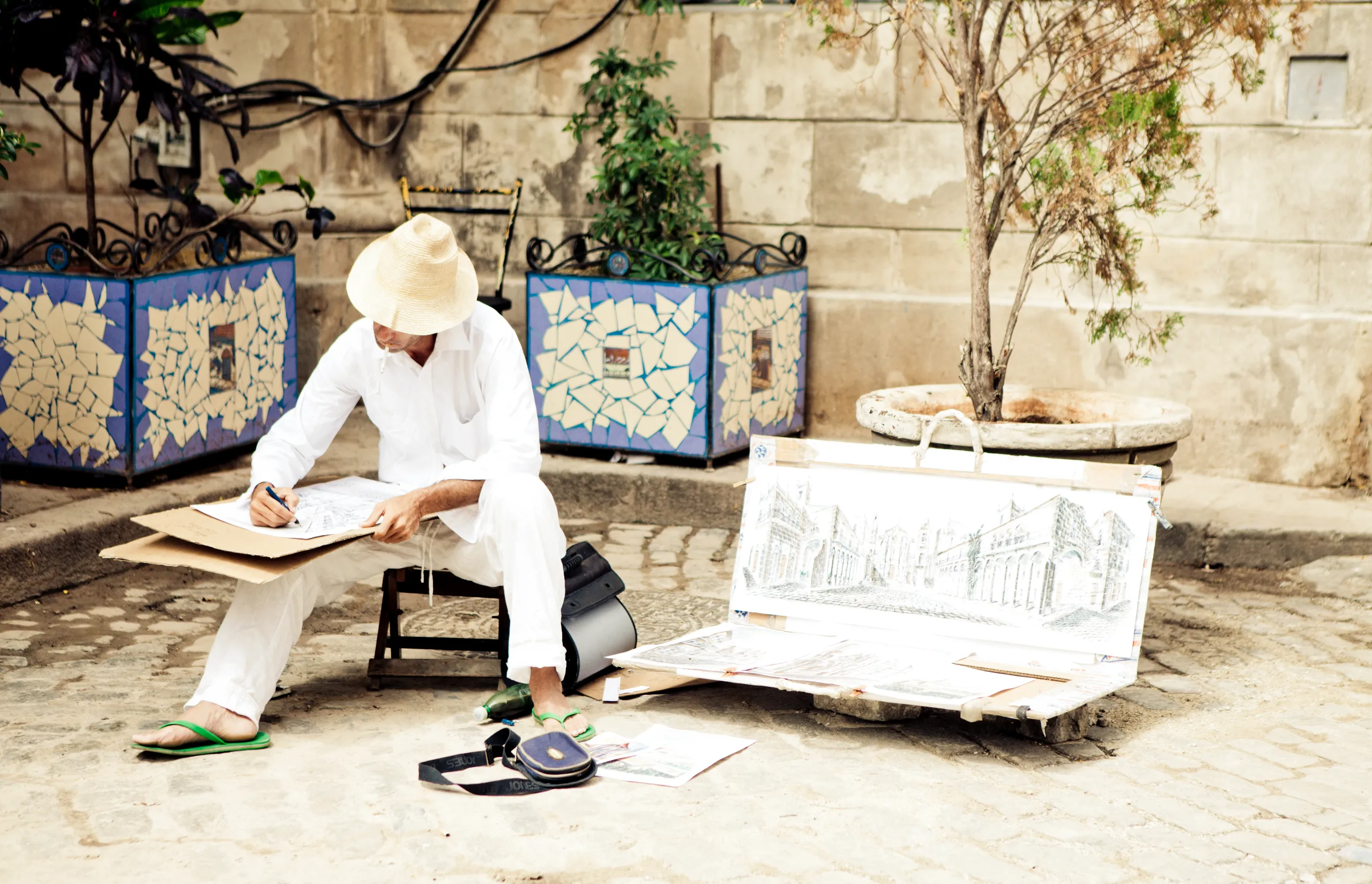
Abel Barroso’s work is anchored in globalisation and migration. He creates woodcuts of robots, games, drones and smartphones – the latter speaking of the island’s undeveloped stance (mobile data on phones was permitted only seven years ago). One installation depicts a ball kicked between migrants from one team (developed countries) facing another (undeveloped countries). “My work is very serious, but I present it with humour. It’s a way to make commentary on the reality of the world,” he says.
“There’s no one in Cuba without a family member who has left,” artist Lisandra Ramírez Bernal tells me in her front room, filled with acrylic cats wearing sunglasses, and transparent suitcases filled with valuables and souvenirs. A series of frames bursting with exquisite paper flowers speak of diversity, fragility and history.
Juan Roberto Diago also creates eye-opening art with a serious social message. I meet him at private art space, El Apartamento, inside a 1950s building where he enjoys a solo show. Portraits of long-necked women with blank eyes and no mouths line the walls. They reflect the state and fate of Black people in society today, a theme Juan has long been drawn to. “We cannot express ourselves; we don’t have our own voice,” he says.
We clamber into a bubblegum-pink convertible 1954 Chevy Bel Air and cruise down Havana’s curving corniche, the Malecón, where whipped-up waves splash onto the road sending cars swerving, and fisherman with rods off the wall.
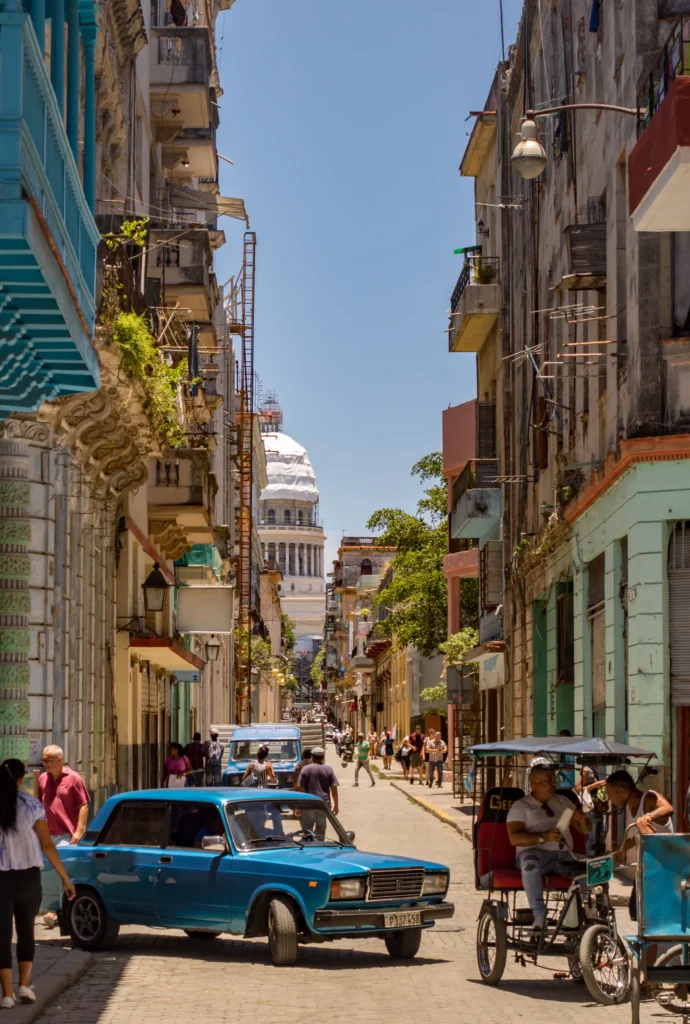
Like a Cuban: music, cigars and celebration
Later, Jesús and I head into the night and meet his friend René, a cigar sommelier. I’m taught how to light and smoke a Cuban cigar and pair it with local rum – the amber-coloured Santiago de Cuba goes down a treat. The annual jazz festival folk are in town. Percussionists Rodney Barreto and Jesús’ friend, Oliver Valdés, blow up the national theatre with their drumming performance. It is exhilarating.
In just a few days, I’ve delved beyond negative headlines and tapped into Havana’s thriving wellspring of talent. It is a privilege to have witnessed Cuba’s irrepressible artistic soul.
Journey Notes
Getting there
Numerous airlines offer flights into Cuba via Europe and the US. If you travel via the US, you will be subject to US regulations. All visitors to Cuba must purchase an e-visa.
Jesús Noguera of Cuba Careo Tours has been offering tours to his native Havana and other island destinations since 2005. Jesús is a Condé Nast Traveler Cuba specialist.
Latest Articles
Don't miss the latest from Luxury Travel
